This guy Hollon sure did crank out some amplifiers. This one is another "nightmare box", but not all nightmare boxes are created equal. I gotta give credit where credit is due. This guy's metal and paint work are first class, or close. It's the electronic side where the user runs into trouble.
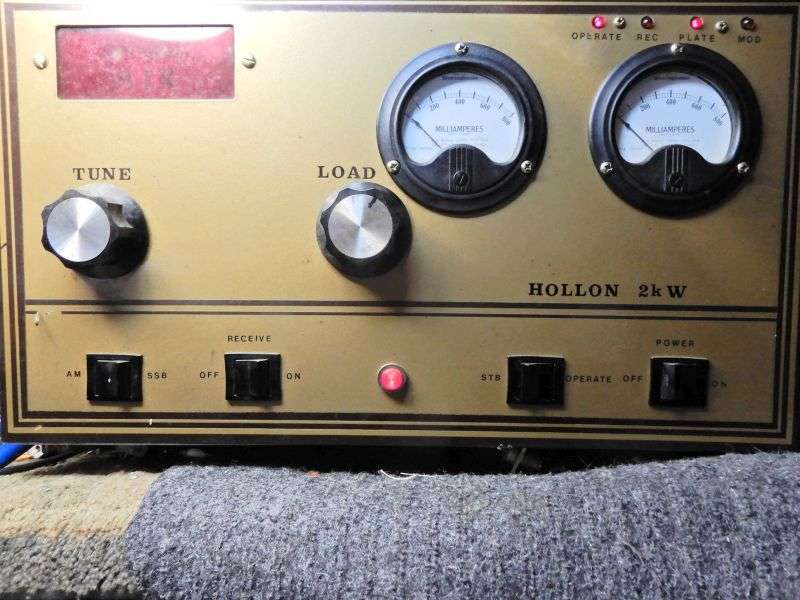
Credit where credit is due. He did use Peter Dahl transformers for the important stuff, like HV and filament power.
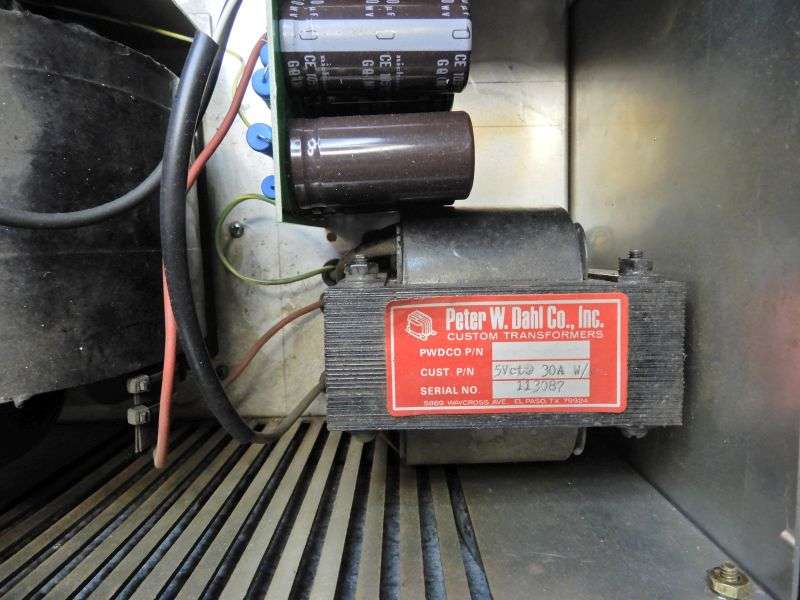
I'm pretty sure Peter's serial number on this one "113087" tells us November 30, 1987. The label on the HV transformer was awkward to read, but it's his "SB220-7" upgraded design. The one you have to cut out the top shield in the SB220 to make it fit. Have yet to see anyone roach that particular transformer.
He liked to use barrier strips and crimp lugs to wire the underside of an amplifier. Not worth ripping it out to solder it all together. Just not my favorite construction method.
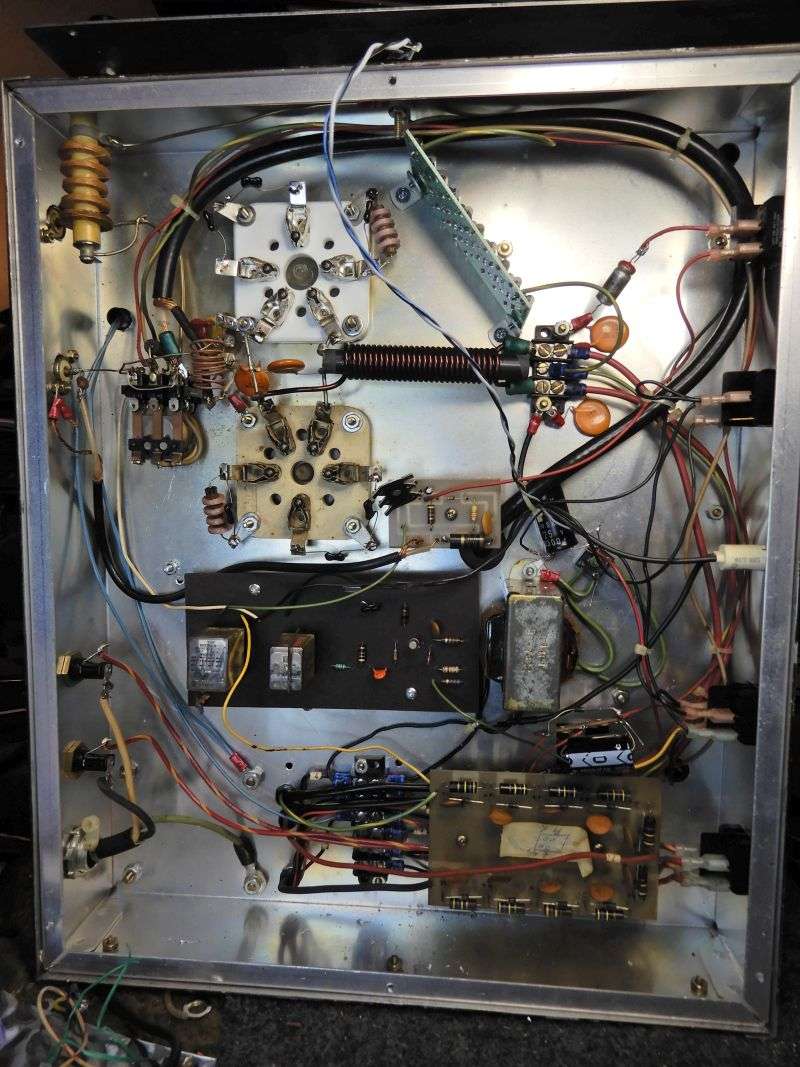
The original type SB220 fan is mounted entirely above the chassis deck.
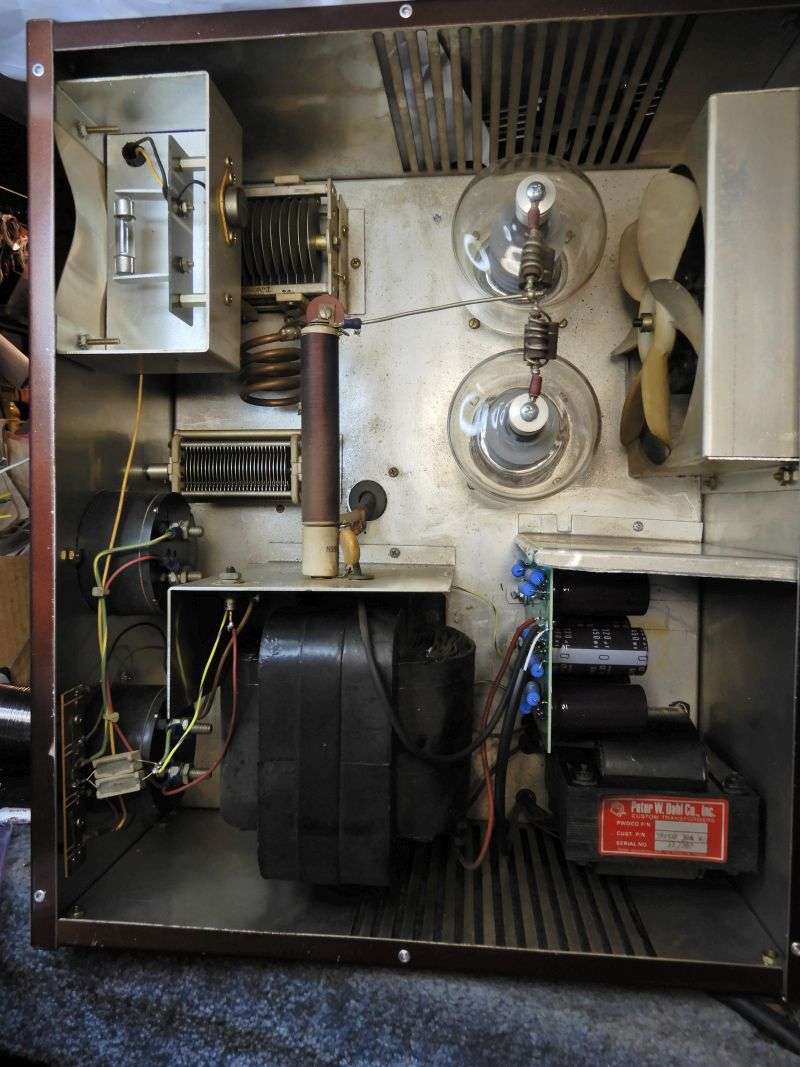
As usual, there was no airflow on the underside of the tube sockets. This amplifier had one socket replaced and this fan will extend the life of the new one. And the solder inside the tubes' filament pins.
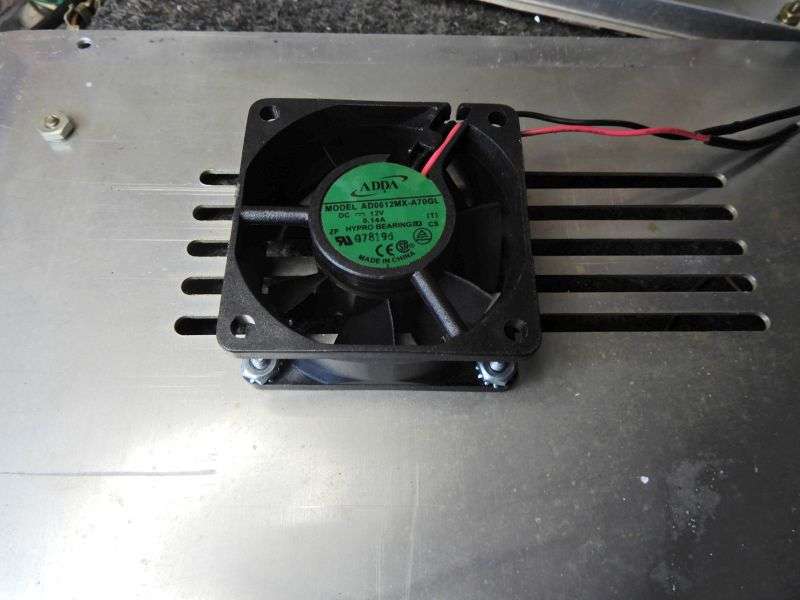
Of course this is not a lab instrument, it's a linear. And the accuracy of the plate-current meter is not a make-or-break design feature. Using military-surplus panel meters is a long-standing tradition. At least you know they were made right. Found the fine print on this meter humorous. The cabinet, and front panel are aluminum, not steel. A steel panel will "steal" some of the meter's magnetic field intensity and affect the reading. Not a problem if the calibration takes this into account.
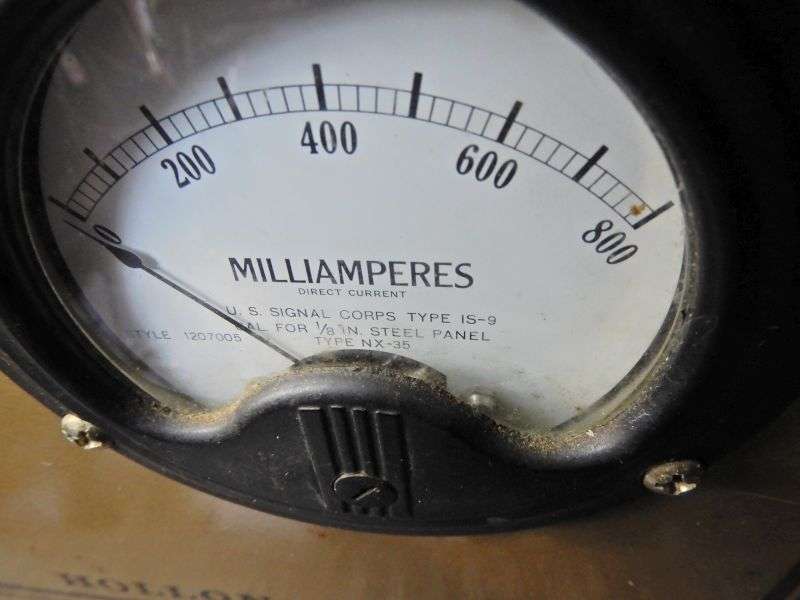
The red rectangle in the upper-left corner of the front panel lights up "On The Air". Seems like a lot of trouble to go to for that, but here it is.
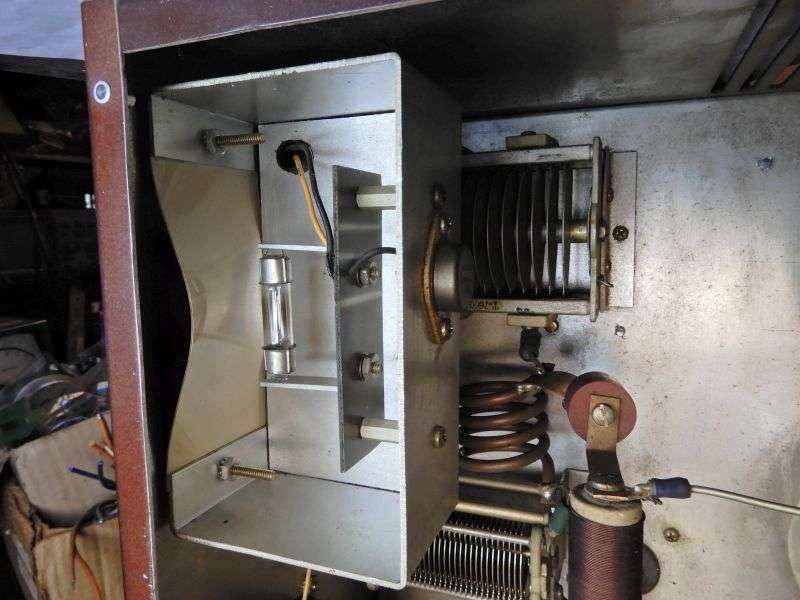
The center contact on the antenna socket was loose, and attempting to restore some tension revealed the center contact had melted into the insulator and wouldn't budge.
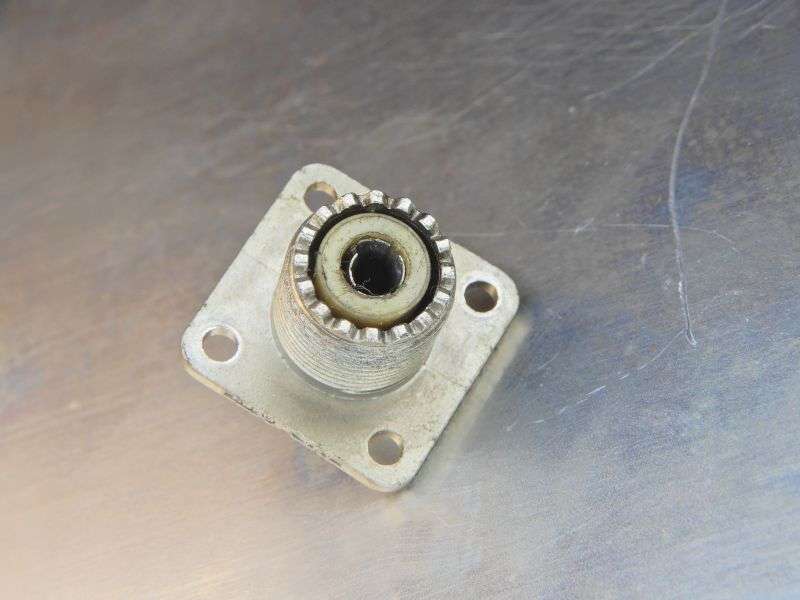
Got replaced with the Amphenol teflon socket. Expensive, but worth it.
This amplifier had ZERO bias on the two 3-500Z tubes. They tend to run hot this way. Fixed that issue.
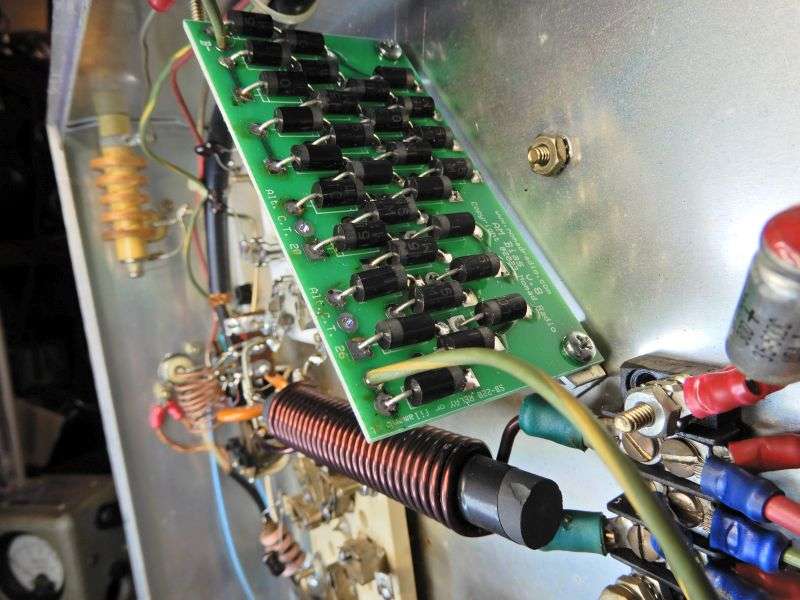
The input to the cathodes of the two tubes was direct, from the relay through a disc capacitor. Made the input-side SWR over 3 to 1. Takes two capacitors and a coil to remedy this.
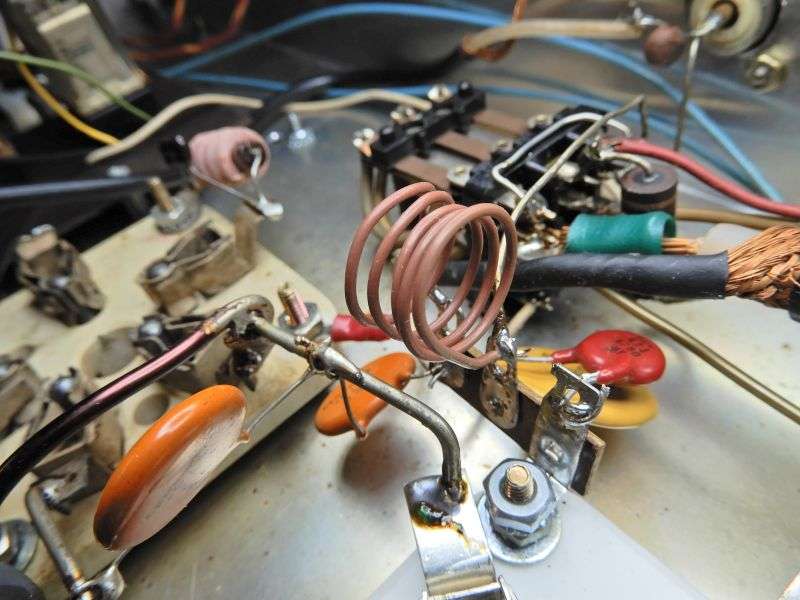
There is a "cut-and-try" angle to this. The coil is wound on a half-inch form. Started out with 7 turns. That's what the Black Cat JB2000 usually requires. Had to stretch that coil to get a good input match. Shrunk it down to 5 turns you see here.
Now for the nightmare part. All this stuff is predictable enough, but the amplifier would still only multiply the drive power by a factor of about 7. Should be ten or twelve to one. And then I noticed that the Load control knob had no pointer. Sure enough, the max power setting had the plates fully meshed together. This tells you the control just didn't turn "far enough" before running to its max extreme.
Oops. Tried adding a fixed capacitor in parallel to extend its adjustment range.

It helped. Got another 100 or so Watts, but the control still "peaks" at its full-capacitance extreme.
The first cap is 68pf. Added two more, now the control peaks BEFORE it runs to the end of its range.
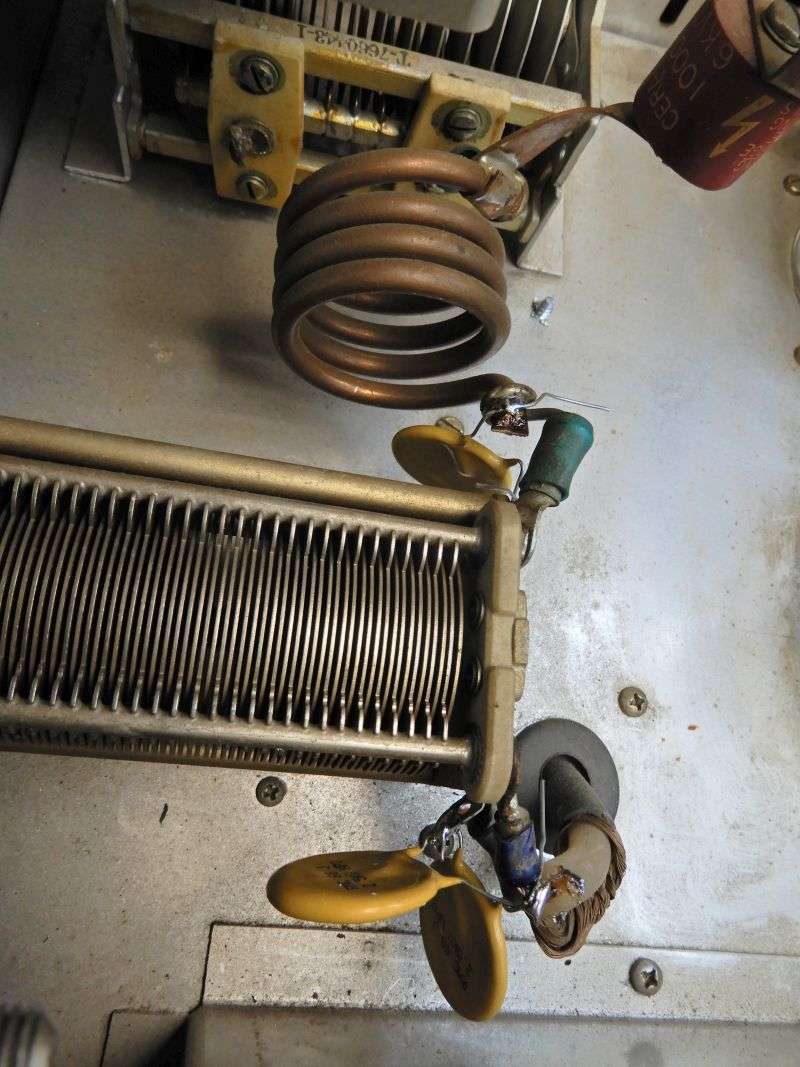
This still only got me up to about 8-to-one gain. A close look at the first and second pics of the Load control show that the coil's turns have been scrunched together as close as they'll go without touching. This was the missing link to get the gain factor past 8-to-1. Decided that any further improvement a bigger coil might get just wasn't worth the time and trouble.
All in all it had only a couple of 'hidden' faults, the too-small variable cap for the Load control, and the bad antenna socket. The rest of it I have learned to anticipate when I see this guy's name on the front of the box.
A smaller nightmare than usual, on the whole.
73

Credit where credit is due. He did use Peter Dahl transformers for the important stuff, like HV and filament power.

I'm pretty sure Peter's serial number on this one "113087" tells us November 30, 1987. The label on the HV transformer was awkward to read, but it's his "SB220-7" upgraded design. The one you have to cut out the top shield in the SB220 to make it fit. Have yet to see anyone roach that particular transformer.
He liked to use barrier strips and crimp lugs to wire the underside of an amplifier. Not worth ripping it out to solder it all together. Just not my favorite construction method.

The original type SB220 fan is mounted entirely above the chassis deck.

As usual, there was no airflow on the underside of the tube sockets. This amplifier had one socket replaced and this fan will extend the life of the new one. And the solder inside the tubes' filament pins.

Of course this is not a lab instrument, it's a linear. And the accuracy of the plate-current meter is not a make-or-break design feature. Using military-surplus panel meters is a long-standing tradition. At least you know they were made right. Found the fine print on this meter humorous. The cabinet, and front panel are aluminum, not steel. A steel panel will "steal" some of the meter's magnetic field intensity and affect the reading. Not a problem if the calibration takes this into account.

The red rectangle in the upper-left corner of the front panel lights up "On The Air". Seems like a lot of trouble to go to for that, but here it is.

The center contact on the antenna socket was loose, and attempting to restore some tension revealed the center contact had melted into the insulator and wouldn't budge.

Got replaced with the Amphenol teflon socket. Expensive, but worth it.
This amplifier had ZERO bias on the two 3-500Z tubes. They tend to run hot this way. Fixed that issue.

The input to the cathodes of the two tubes was direct, from the relay through a disc capacitor. Made the input-side SWR over 3 to 1. Takes two capacitors and a coil to remedy this.

There is a "cut-and-try" angle to this. The coil is wound on a half-inch form. Started out with 7 turns. That's what the Black Cat JB2000 usually requires. Had to stretch that coil to get a good input match. Shrunk it down to 5 turns you see here.
Now for the nightmare part. All this stuff is predictable enough, but the amplifier would still only multiply the drive power by a factor of about 7. Should be ten or twelve to one. And then I noticed that the Load control knob had no pointer. Sure enough, the max power setting had the plates fully meshed together. This tells you the control just didn't turn "far enough" before running to its max extreme.
Oops. Tried adding a fixed capacitor in parallel to extend its adjustment range.
It helped. Got another 100 or so Watts, but the control still "peaks" at its full-capacitance extreme.
The first cap is 68pf. Added two more, now the control peaks BEFORE it runs to the end of its range.

This still only got me up to about 8-to-one gain. A close look at the first and second pics of the Load control show that the coil's turns have been scrunched together as close as they'll go without touching. This was the missing link to get the gain factor past 8-to-1. Decided that any further improvement a bigger coil might get just wasn't worth the time and trouble.
All in all it had only a couple of 'hidden' faults, the too-small variable cap for the Load control, and the bad antenna socket. The rest of it I have learned to anticipate when I see this guy's name on the front of the box.
A smaller nightmare than usual, on the whole.
73
Last edited:
